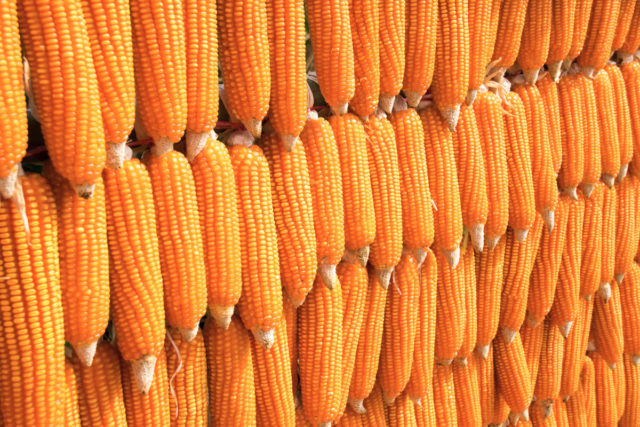A lower dollar, a deal with China and improving international demand have proved bullish for U.S. maize in recent weeks. However, U.S. farmers are having some problems, with maize harvesting looking set, as 2019 drew to a close, to extend into 2020.
In its Dec. 19 Market Perspectives report, the U.S. Grains Council noted a rise in maize futures.
“Geopolitical developments have been broadly favorable for the CBOT markets and speculative traders’ short covering action has further supported futures values,” the IGC said. “The U.S. dollar index has moved well below its recent highs posted in late November, which has helped increase the competitiveness of U.S. corn on the export market.
“International demand for U.S. corn is picking up, as evidenced by recent USDA reports. Overall, the corn market looks to maintain its current range, supported by technical factors and firmer cash prices, and possibly grind higher into the New Year.”
The European Confederation of Maize Production (CEPM), in a weekly newsletter dated Dec. 17, highlighted a rise in U.S. maize prices, noting that U.S. export figures had been better than expected.
“However, it was above all the announcement that an agreement on trade issues had been reached between China and the United States that caused the markets to react strongly,” the CEPM said. “This upward movement remained limited by a certain amount of uncertainty.”

The CEPM pointed out that the United States only canceled a duty increase scheduled for Dec. 15 and that China had not publicly committed to the $50 billion of purchases over two years announced by the United States.
“Operators will therefore closely follow the formal content of the agreement, which should be signed in mid-January,” the CEPM said. “In addition, the blocking of the vote in the House of Representatives on the new North American Free Trade Agreement with Mexico and Canada has ended.”
In its Dec. 12 Feed Outlook report, the USDA’s Economic Research Service said the maize harvest was still underway, with 92% of the crop harvested as of Dec. 8.
“This is a significant shortfall compared with last year’s pace at this point,” the USDA said. “Typically, the harvest is complete by this time.”
The USDA revised its figure for 2019-20 world coarse grains production up by 6.81 million tonnes in December, to 1.401 billion, 0.24% up on the previous year’s output.
“The majority of the month-to-month increase comes from China, which reported a larger-than-expected corn harvest,” the ERS said. “Additionally, barley revisions from Canada and the European Union more than offset lower production of sorghum in Australia.”
A rise in China’s maize production forecast production of 6.77 million tonnes, to 260.77 million, more than offset cuts for Australia and Canada.
“Australian corn continues to struggle due to dryness and drought throughout the main growing regions of Western Australia, central Queensland, and in the northern area of New South Wales,” the ERS said. “Canadian corn production is also reduced based on a lower-than-expected yield as the harvest continues at a historically delayed pace.”
The CEPM also highlighted an estimate from Brazil’s CONAB, putting that country’s 2019-20 maize production at 98 million tonnes, down from 100 million the year before, with exports set to fall to 34 million tonnes from 40 million in 2018-19 because of increased domestic demand for the ethanol and animal feed sectors.
“In Argentina, the lack of rain is becoming a problem for existing seedlings, which are beginning to pollinate, and for seedlings that are yet to be sown,” the CEPM said.
The CEPM also pointed out that Argentina’s government has raised export taxes to 12% on grains and 30% on oilseeds.
“This decision, which did not come as a surprise, could affect the continuation of maize planting depending on the margins of each crop,” the CEPM said.






